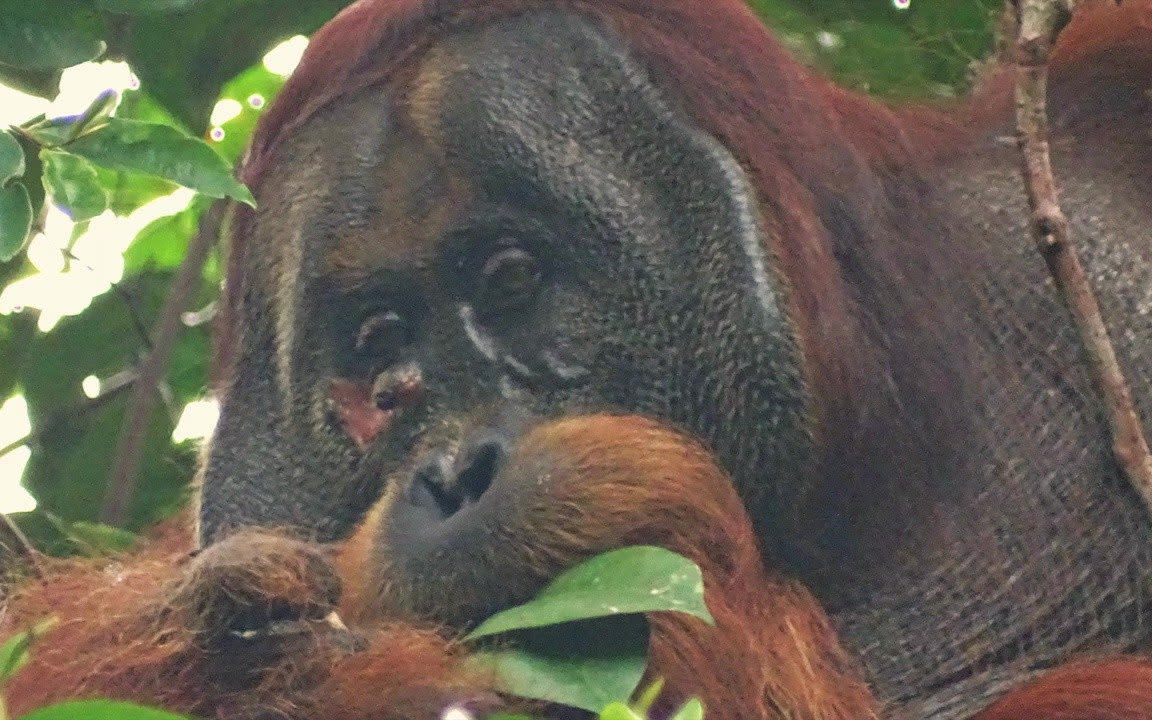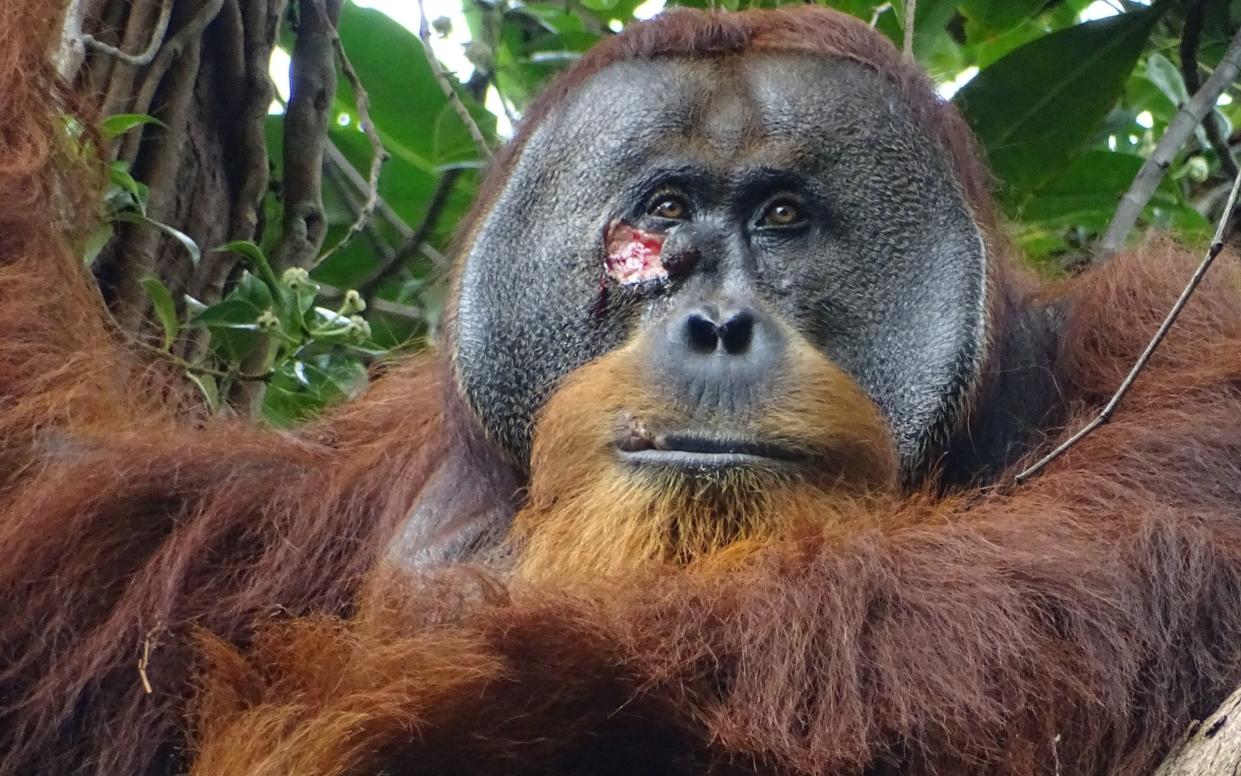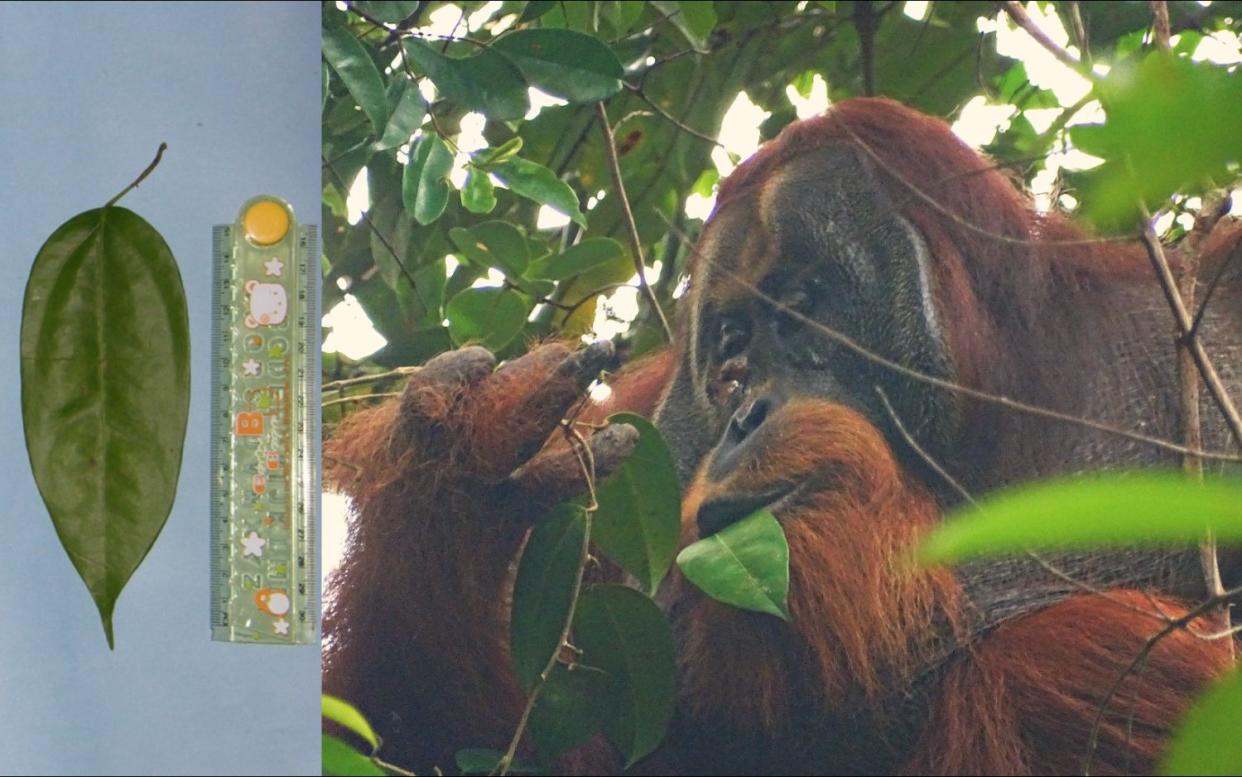Orangutan treats wound with medicinal plant in first for animals

An orangutan has been spotted treating an open wound with a medicinal plant, the first time the behaviour has been seen in animals.
The male Sumatran orangutan named Rakus sustained a painful cheek wound, possibly from fighting with another male at the Gunung Leuser National Park in north western Indonesia.
Three days after the injury Rakus was seen ripping off leaves from a variety of climbing liana plant, chewing on them and applying the juicy pulp to the wound for several minutes.
Finally, Rakus covered the wound in the chewed leaves like a plaster and continued to eat the plant for another 30 minutes.
Dr Isabelle Laumer, of the Max Planck Institute of Animal Behavior, in Germany, said: “The behaviour of Rakus appeared to be intentional as he selectively treated his facial wound on his right flange, and no other body parts, with the plant juice.
“The behaviour was also repeated several times, not only with the plant juice but also later with more solid plant material until the wound was fully covered. The entire process took a considerable amount of time.”
The plant used is known locally as Akar Kuning and is used as a medicine by the Indonesians.
Analyses of plant chemical compounds show the presence of furanoditerpenoids and protoberberine alkaloids, which are known to have antibacterial, anti-inflammatory, anti-fungal, antioxidant, and other biological activities which can aid wound healing.
The plant is also known for its painkilling and anti-fever effects and is used to treat various diseases, such as malaria dysentery and diabetes.
The researchers kept an eye on Rakus over the following days and the orangutan did not show any signs of the wound becoming infected. After five days the wound was already closed and healed completely within a month.

“Interestingly, Rakus also rested more than usual when being wounded,” added Dr Laumer
“Sleep positively affects wound healing as growth hormone release, protein synthesis and cell division are increased during sleep.”
Many animals are known to self-medicate, eating plants, soil or insects to cure disease, or ward off parasites, bacteria and viruses.
The practice is known as zoopharmacognosy and great apes have been known to ingest specific plants to treat a parasite infection and to rub plant material on their skin to treat sore muscles.
Recently a chimpanzee group in Gabon was observed applying insects to wounds.
Farmers in England would often keep “hospital fields” full of wild flowers and drive sick animals inside so they could select a plant to make them feel better.
But it is the first time that an animal has been observed treating an open wound with a medicinal substance.
The team are unsure whether the practice is widespread or has just been discovered by a single ape.

Dr Caroline Schuppli, senior author of the study, said: “It is possible that wound treatment with Akar Kuning by the orangutans emerges through individual innovation,” says Caroline Schuppli, senior author of the study.
“Orangutans at the site rarely eat the plant. However, individuals may accidentally touch their wounds while feeding on this plant and thus unintentionally apply the plant’s juice to their wounds.
“As Akar Kuning has potent analgesic effects, individuals may feel an immediate pain release, causing them to repeat the behaviour several times.”
The first treatment and bandaging of wounds is recorded in medical texts dating back 2200 BC, but the new observations suggest that our human ancestors are likely to have discovered and used medicinal plants far earlier.
It also suggests that our human ancestors may have discovered and used medicinal plants early in their evolutionary history.
“As forms of active wound treatment are not just human, but can also be found in both African and Asian great apes, it is possible that there exists a common underlying mechanism for the recognition and application of substances with medical or functional properties to wounds and that our last common ancestor already showed similar forms of ointment behaviour,” added Dr Schuppli
The research was published in the journal Scientific reporters.


